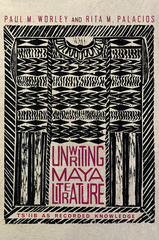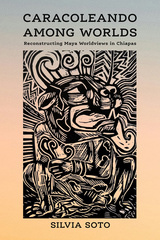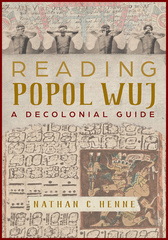
The Maya Art of Speaking Writing
Remediating Indigenous Orality in the Digital Age
Based on nearly a decade of fieldwork in the Guatemalan highlands, Tiffany D. Creegan Miller discusses images that are sonic, pictorial, gestural, and alphabetic. She reveals various forms of creativity and agency that are woven through a rich media landscape in Indigenous Guatemala, as well as Maya diasporas in Mexico and the United States. Miller discusses how technologies of inscription and their mediations are shaped by human editors, translators, communities, and audiences, as well as by voices from the natural world.
These texts push back not just on linear and compartmentalized Western notions of media but also on the idea of the singular author, creator, scholar, or artist removed from their environment. The persistence of orality and the interweaving of media forms combine to offer a challenge to audiences to participate in decolonial actions through language preservation.
The Maya Art of Speaking Writing calls for centering Indigenous epistemologies by doing research in and through Indigenous languages as we engage in debates surrounding Indigenous literatures, anthropology, decoloniality, media studies, orality, and the digital humanities.
‘An important examination into how Maya peoples use a variety of technologies—from painting to Facebook and YouTube—to reproduce Maya language and culture in the twenty-first century.’—Paul M. Worley, co-author of Unwriting Maya Literature: Ts’íib as Recorded Knowledge‘The Maya Art of Speaking Writing will be of interest not only in the field of Maya studies but also, more broadly, to scholars and students invested in participatory ethnography, language revitalization, media studies, and digital humanities. Miller’s examination of the power dynamics of (re)mediation offers a compelling and nuanced response to ongoing debates in postcolonial, subaltern, and Indigenous studies over how power and privilege impact texts’ production and reception.’—Hannah Burdette, Chaqui
‘Creegan Miller demonstrates the strong connection that orality and writing have in Maya worlds. Readers will find in this book a resource for learning about how Maya’s ancient
traditions have a direct influence on their mediation practices today in both the real and the virtual world. So, like the premise of this book,students in my classes eventually conclude that writing is typing, painting, weaving, videotaping, performing, and speaking knowledge.’—Nora K. Rivera, Textual Cultures
‘An important examination into how Maya peoples use a variety of technologies—from painting to Facebook and YouTube—to reproduce Maya language and culture in the twenty-first century.’—Paul M. Worley, co-author of Unwriting Maya Literature: Ts’íib as Recorded Knowledge‘The Maya Art of Speaking Writing will be of interest not only in the field of Maya studies but also, more broadly, to scholars and students invested in participatory ethnography, language revitalization, media studies, and digital humanities. Miller’s examination of the power dynamics of (re)mediation offers a compelling and nuanced response to ongoing debates in postcolonial, subaltern, and Indigenous studies over how power and privilege impact texts’ production and reception.’—Hannah Burdette, Chaqui
‘Creegan Miller demonstrates the strong connection that orality and writing have in Maya worlds. Readers will find in this book a resource for learning about how Maya’s ancient
traditions have a direct influence on their mediation practices today in both the real and the virtual world. So, like the premise of this book,students in my classes eventually conclude that writing is typing, painting, weaving, videotaping, performing, and speaking knowledge.’—Nora K. Rivera, Textual Cultures
Tiffany D. Creegan Miller is an assistant professor of Spanish at Colby College.











